Mad Max: Fury Road is the best mixed bag car chase made in years
The madness that is Mad Max: Fury Road became my most anticipated movie of the year when the first trailer blew away viewers last July, and every trailer since only helped solidify my excitement. As cinematically sacrilegious as it may sound, I hadn’t been as anxious to see a new release based on style alone since Zack Snyder’s 300 made its initial waves, and the media mania surrounding Max Max kept building up an artistic, action-heavy blockbuster the likes of which we’d never seen. On that note, the film succeeds tremendously. It’s the kind of on-screen adrenaline IV Michael Bay’s wet dreams are made of, with enough fire and screaming engine energy to fuel the action of more than a few wannabe comparisons, and you’ll likely be uncurling your fists when the end credits roll. As a cerebral unwinding of A-to-B plot and an unpacking of satisfying character quirks, Fury Road falls a little short. Ninety-percent bombastic bang of a summer blockbuster, nine percent live-action cartoon fringed with unintentional self-parody, and one-percent plot development and dialogue, the movie is going to be seen as the desert car chase masterpiece that defines this summer’s sensational cinema season.
Read the rest of my mixed bag of a review for Mad Max: Fury Road after the jump.
I wanted to love the living bejesus out of Fury Road, I really did. For the most part, the movie lived up to my expectations as the badass, color clashing, eccentric cocktail that had been previewed in the trailers, but once the lights came up and all was said and done I found myself torn. I couldn’t place my confusion at first, but after thinking about the action-packed outrageousness I’d just seen for a while I realized what it was. Mad Max is a movie that has its amp turned all the way up to 11 from scene one, and, not unlike standing in front of the speakers at a hard-hitting concert, the vibrations and sensory overload can rattle the brain a bit. There are moments throughout the film in which its characters, and the audience, attempt to take a much-needed breather and regain some bearings, but the insane pace that’s been set and continuously fire-fed makes those moments of rest feel out of place and even a bit forced. Comical, at times, even. It’s as if director George Miller knows he’s shoveling red-hot insanity down our throats, and he’s got to give us a minute to swallow before he can continue to do so, so he peppers in a few quieter plot-powering beats to help it all go down. There are mandatory moments of exposition that, in any other film, would have provided the glue post-apocalyptic reviewers use to hold their damning reviews together. Here, they’re forgiven or brushed aside in lieu of the action on display.
That said, one could argue that the meat of the movie is its non-stop saturation of the senses, and story as well as character development are passengers along for the ride. We get quick flashbacks of family that terrorize a muzzled Max, a backbone of a sub/side/main plot focusing on Charlize Theron’s character Furiosa and her gaggle of escaped women, an angry, mask-wearing voice who takes chase, a few mid-level bosses, and handfuls of expendable henchmen and vehicles in various colors and styles to fall under the wheel before the end of the road. That’s all you need to know, and oftentimes it’s enough to piece together the mayhem of the chase. But, when boiled down, Mad Max is simply one long car chase through an orange and grey apocalyptic desert. Flashes of color, flairs from the camera, outrageous wide shots, white-knuckle atmospherics, and burning rubber – that’s the Mad Max we were promised, and that’s the Mad Max we got. I love it for what it is and what it intentionally became, but at the same time I’m puzzled that it’s getting a pass where others of its ilk are usually condemned.
The subtleties that are present hint at a world in which water is a rarity, gasoline is dispensed from Gas Town, women are bred and milked, bling bling and bang bang is the language of the land, and bullets are brought back from Bullet Farm. On paper, Miller’s fourth installment in his growing franchise (new Max himself Tom Hardy is signed on for three more Mad Max movies) has to look like countless science fiction apocalyptic wasteland books or never-to-be-made B-movie spec scripts. On screen, there are resemblances to previous installments, but the director’s 30-year absence from the world he created has left room for other movies like Doomsday, The Book of Eli, Waterworld, and countless others. That means it’s near impossible not to let the imitators and fair-field players mentioned leak into your perception as you’re watching the newest Mad Max. I found myself comparing elements to Waterworld in particular on more than one occasion, which was a mixed bag. As mentioned earlier, a plot point like searching for “the green place,” or a character casually mentioning “I remember something looking like that” when stumbling through the desert, in any other movie, would be considered silly or even stereotypical of the genre. For that reason alone, one or two eye-rolling scenes almost became parody of the post-apocalyptic pyramid Miller helped create. There’s as much of a chance this was intentional as there is that it was not even considered, and ultimately it’s up to the viewer to see past how paint-by-numbers pieces of the puzzle have become.
Much like the plot, Max himself often takes a back seat or becomes nothing more than a rag doll sounding board for gunshot and gear shifting. Tom Hardy utters maybe fifty words over the course of the film, and his road warrior persona is more an immortal presence than a character arc. He grunts and nods his way from one hood-riding fight scene to another, and, as much as I love the guy, Hardy is almost replaceable. “What?! You’re mad,” you might say, but for half of the movie Max is a body behind a muzzle, and the other half he’s more than likely a stuntman on wires. Unfortunatly, the right face and grimace from any likable actor could have filled those shoes. The real takeaway characters here are Charlize Theron’s Furiosa (who many are pioneering as a powerful female presence carrying a feminist message) and Nicholas Hoult’s paint and scar-covered Nux. Both have the closest to what one would consider satisfying character journeys and motivations, and it’s easy to root for either as they work their way toward redemption.
As for the baddies, that medal-wearing monster up above is the movie’s main villain Immortan Joe (played by, believe it or not, Hugh Keays-Byrne from the original Mad Max), and he’s pretty much a megaphone reminder on a mission. He’s sporting a voice similar to that of Lord Humungus, he’s got henchmen/sons who resemble Master and Blaster, he’s fond of the aesthetic excess found in Beyond Thunderdome, and he does a decent job of driving those that follow him forward as he chases after Furiosa. Along the road, Immortan Joe is joined by one or two generals and off road armies from Bullet Farm and Gas Town, and the chase continues. Again, on paper, it’s the makings of self-published fiction and video game scripts, but it’s somehow working audiences and critics alike into enough of a frenzy to secure a Rotten Tomatoes rating of 98%.
While it may not have exploded my brain as fully as I had hoped, Mad Max: Fury Road is a gas-spitting, pulse-pounding orgasm of a car chase that puts the Fast and Furious franchise to shame and re-thrones George Miller as the king of his crazy castle. Just like The Cabin in the Woods dropped the mic in front of imitators and copycats within the horror genre, Fury Road is Miller’s mic drop to any filmmaker with an apocalyptic wasteland tale rattling around in their skull.

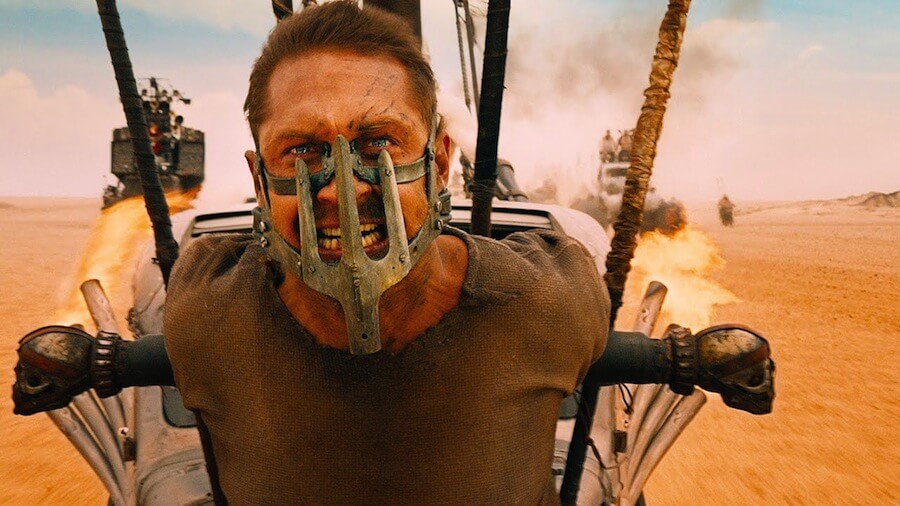
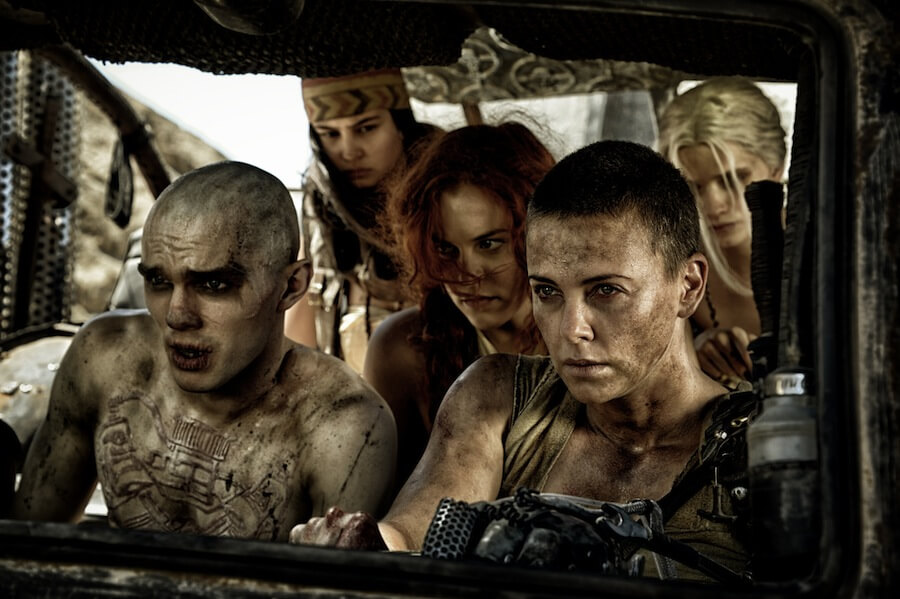
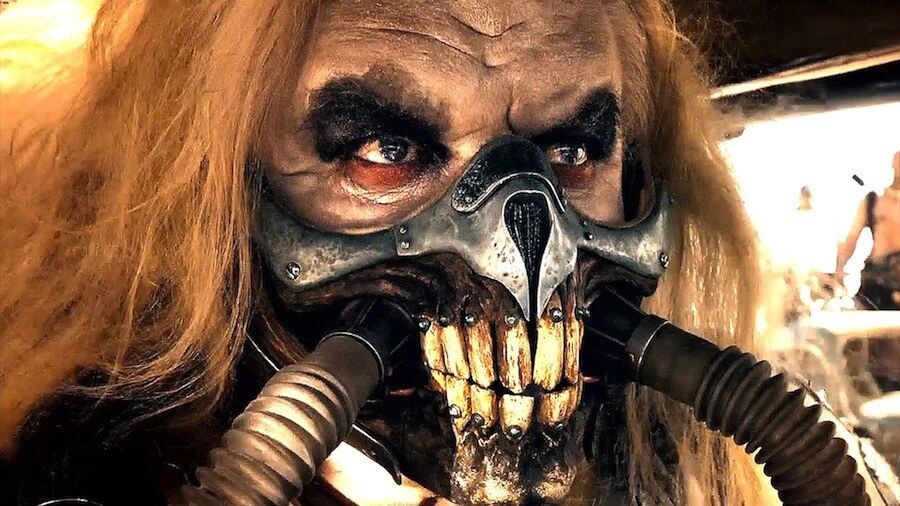
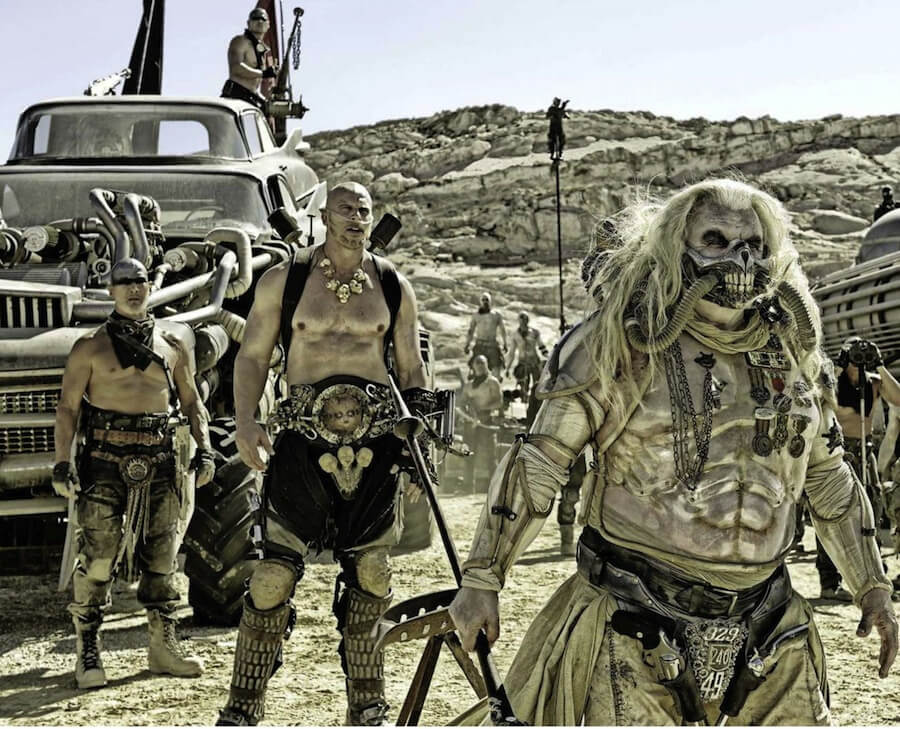
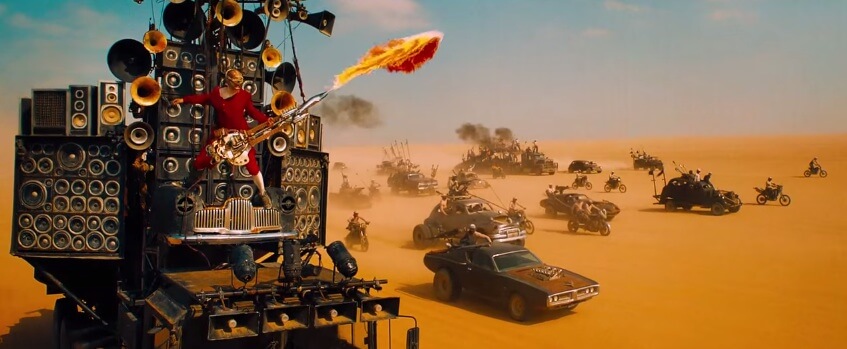
3 thoughts on “(Review) My torn MAD MAX: FURY ROAD review”
Comments are closed.